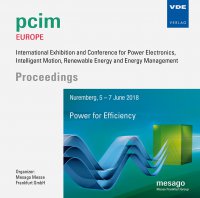Control of Partial Discharge with High Temperature Insulating Polymer for High Voltage IGBT Module Application
Konferenz: PCIM Europe 2018 - International Exhibition and Conference for Power Electronics, Intelligent Motion, Renewable Energy and Energy Management
05.06.2018 - 07.06.2018 in Nürnberg, Deutschland
Tagungsband: PCIM Europe 2018
Seiten: 6Sprache: EnglischTyp: PDF
Persönliche VDE-Mitglieder erhalten auf diesen Artikel 10% Rabatt
Autoren:
Morshed, Muhammad; Islam, Ariful; Roose, Thomas; Longney, Daniel; Wang, Yangang; Dai, Andy; Li, Daohui (Dynex Semiconductor ltd., UK)
Inhalt:
The need for electrical isolation along with partial discharge (PD) resistance is ever increasing in the field of power electronics with increasing IGBT module operating voltages up to 6.5kV. The ceramic substrate within the power module is the key component that isolates the high voltage side from ground. When the substrates are exposed to high voltage, electric fields are induced around the edges of metal-ceramic interface where voids are often present. These voids are identified as the sources PD and can lead to PD or isolation failures. In order to ensure longevity of modules, it is essential to maintain low PD as it is the main degradation mechanism of encapsulation material in high voltage power modules. In this work, high temperature insulating material such as polyimide was used on the metallization periphery in order to impeding PD. Three different polyimides (polyimide-G, polyimide-Y and polyimide-K) were investigated, two of them (polyimide-G and polyimide-Y) are the same composition modified with adhesion promoter of G and Y coated on the top surface of the AMB copper metallization edges ceramic-copper metallization. The results show polyimide-K had the best PD performance followed by polyimide-G and then polyimide-Y. The coating thickness and the bond to the AMB metallization edges enhanced the PD performance. Polyimide-G improved the adhesion to the metal and ceramic surfaces. The coating thickness of polyimide-K measured around 110 micron which is ~2.5 times thicker than polyimide-G and Y. The thicker coating improved the electric breakdown strength of polyimide-K.


